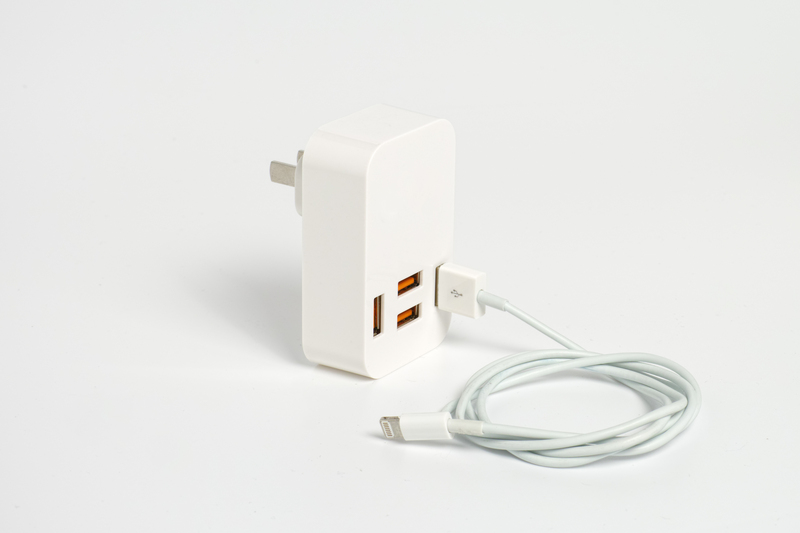Kinetic Lifting - The Movement Science Behind Protecting Your Back
The human back is an intricate structure that bears the burden of our daily lives. From the moment we rise until we sleep, our spine and supporting musculature are hard at work to provide movement, flexibility, and support. Among the essential movement science topics, kinetic lifting stands out as both fascinating and fundamental to preventing back injuries. In this in-depth guide, we'll explore the principles, strategies, and cutting-edge research behind kinetic lifting techniques that keep your back safe--whether you're at work, at the gym, or at home.

Understanding Kinetic Lifting: What Is It?
Kinetic lifting refers to a set of scientifically informed movement patterns and lifting techniques designed to minimize strain on the back, maximize mechanical efficiency, and prevent injuries. Unlike casual or instinctive lifting, kinetic lifting draws from biomechanics, ergonomics, and kinesiology to ensure each lift is performed with optimal alignment and muscular engagement.
- Kinetics: The study of forces and their impact on movement.
- Lifting: The physical act of raising or moving heavy objects.
- Movement Science: An interdisciplinary field combining anatomy, physiology, biomechanics, and psychology to understand how we move.
By harnessing the principles behind kinetic lifting, individuals can drastically reduce the risk of low back pain--a leading cause of disability globally.
The Anatomy of the Back: Why Proper Lifting Matters
The spine is not just a stack of bones; it is a complex structure consisting of vertebrae, intervertebral discs, ligaments, muscles, and nerves. Improper lifting exposes this delicate system to unnatural forces, increasing the likelihood of injury. Common back injuries associated with poor lifting include:
- Herniated discs
- Muscle strains
- Ligament sprains
- Chronic lower back pain
- Compression fractures
It's not just heavy lifting that causes problems; repetitive incorrect movement patterns--often during everyday activities--are major contributors to cumulative stress on the back.
Biomechanics and Efficiency in Kinetic Lifting
Kinetic lifting techniques are rooted in biomechanical efficiency. When practiced correctly, these movements:
- Distribute forces evenly throughout the musculoskeletal system
- Engage the correct muscle groups, especially the glutes, core, and legs
- Maintain the natural curvature of the spine (neutral spine position)
- Reduce the risk of overloading particular spinal segments
The science is clear: using proper movement science-based kinetic lifting methods protects your back now and into the future.
The Principles of Kinetic Lifting
To ensure optimal back health, kinetic lifting embodies several foundational principles derived from ergonomics and biomechanics:
1. Maintain a Neutral Spine
Keeping the spine's natural curves intact--avoiding excessive rounding or arching--prevents stress on both discs and ligaments.
2. Use the Legs, Not the Back
The lower body, specifically the glutes and quadriceps, is built to generate power. By bending at the hips and knees, you shift the load away from the spinal column.
3. Keep the Load Close
Holding objects close to your center of gravity (near the body) lessens leverage forces on the spine, making lifts both safer and easier.
4. Avoid Twisting While Lifting
Rotational movements, especially under load, significantly increase the risk of spinal injury. Always turn the whole body--including your feet--when changing direction.
5. Move Smoothly and Deliberately
Kinetic lifting emphasizes controlled, fluid movements to reduce jerking and sudden load spikes on the back.
The Kinetic Lifting Technique: Step-by-Step
Let's break down the movement science behind safe lifting using a practical, stepwise approach:
- Prepare Your Body and Space
- Warm up the muscles with light activity
- Clear the path for unrestricted movement
- Set Up the Lift
- Stand close to the object, feet hip-width apart
- Point your toes slightly outward for stability
- Engage Your Core
- Brace your abdominal and back muscles
- Maintain a neutral spine
- Grip Firmly and Keep the Object Close
- Choose an overhand (palms down) or mixed grip for heavy objects
- Lift with Your Legs
- Drive upward by straightening your knees and hips
- Keep your chest up and back flat
- Move With Purpose
- If turning, pivot your feet rather than twisting your torso
- Set Down Safely
- Push your hips back and bend your knees
- Maintain control throughout the descent
Kinetic Lifting in the Workplace: Ergonomic Solutions
Many workplace injuries stem from poor lifting methods. Implementing ergonomic kinetic lifting strategies can transform job safety and productivity. Here are workplace-centered tips:
- Design workstations to minimize awkward lifting
- Use adjustable shelves and carts to position objects at waist height
- Train employees on movement science-based lifting techniques regularly
- Utilize assistive devices (dollies, lift tables) for heavy or awkward loads
- Encourage collaborative lifts where loads are shared
By integrating kinetic lifting principles, not only are workers protected, but organizations also see lower injury rates, fewer lost workdays, and reduced insurance costs.
Kinetic Lifting in Sport and Fitness
Athletes and gym-goers, from weightlifters to CrossFit enthusiasts, benefit enormously from kinetic lifting science. The same principles ensure a strong, resilient back under heavy loads. Key tips for athletes include:
- Mastering fundamental lifts: squat, deadlift, power clean
- Gradually increasing load and complexity
- Focusing on form over ego-lifting
- Incorporating corrective exercises for mobility and stability
- Respecting rest and recovery
Proper kinetic lifting techniques not only prevent injury but also enhance overall athletic performance through improved force transfer and increased power output.
Science-Backed Benefits of Kinetic Lifting
- Prevents acute and chronic back injuries
- Optimizes muscular engagement for maximal strength and efficiency
- Promotes long-term musculoskeletal health
- Reduces fatigue and enhances endurance
- Empowers individuals with movement awareness
Studies published in journals such as Spine and the Journal of Occupational Rehabilitation have repeatedly shown that workers and athletes trained in kinetic lifting see a statistically significant reduction in back injuries--proving that movement science works.
Beyond the Basics: Advanced Concepts in Kinetic Back Protection
As science advances, so do our strategies for back protection and healthy movement. Here are some of the latest concepts emerging in the world of kinetic lifting:
Dynamic Stability Training
Incorporating instability--using balance tools or functional movements--enhances your body's inherent ability to stabilize the spine during unpredictable loads or positions.
Motor Control and Mindfulness
Mindful attention to movement, or "movement literacy," trains the nervous system to subconsciously use correct form, decreasing the risk of careless, injury-prone lifts.
Individualized Lifting Strategies
Not every lift--or every back--is the same. Factors such as height, limb proportions, prior injuries, and fitness level all dictate how kinetic lifting science should be personalized.
Technology-Assisted Training
Wearable sensors, motion capture apps, and biofeedback systems are revolutionizing how we learn and practice kinetic lifting techniques--by providing real-time feedback and coaching.
Common Myths About Lifting and Back Injuries
- "Lifting with a rounded back is always dangerous."
While generally best avoided, some lifters can safely round their backs with proper conditioning and progressive overload. However, for non-athletes, neutral spine remains ideal. - "A weight belt alone will protect your back."
Belts can assist, but only when good kinetic movement patterns are already in place. - "Light objects don't require proper technique."
Repetitive poor movement, even with light weights, can cause cumulative damage. - "Only weak backs get injured."
Strength matters, but so does technique. Even strong individuals can get hurt by poor lifting form.
Exercises and Strategies to Enhance Kinetic Lifting Skills
Mobility for Safe Movement
- Dynamic hip flexor and hamstring stretches
- Thoracic spine mobility drills
- Ankle dorsiflexion exercises
Core and Glute Activation
- Planks and anti-rotation holds
- Glute bridges and hip thrusts
- Bird-dogs and supermans
Patterning Safe Lifts
- Bodyweight squats and deadlifts with dowels
- Goblet squats for keeping load close
- Practice lifts with real-world objects (boxes, laundry baskets) under supervision
Consistency and gradual progression are the keys to making safe kinetic movement patterns second nature.

The Future of Kinetic Lifting and Back Protection
As technology and movement science evolve, the importance of kinetic lifting in daily living will only grow. The integration of wearable tech, virtual coaching, workplace ergonomic redesigns, and greater public awareness is setting a new standard for musculoskeletal health.
More industries, from healthcare to sports to manufacturing, are adopting movement science-based kinetic lifting programs--not just to reduce injury but to empower workers, patients, and athletes with lifelong movement skills.
Conclusion: Move Smart, Lift Strong, Protect Your Back
The science behind kinetic lifting is clear: intentional, biomechanically efficient movement patterns are your best ally in safeguarding your back for life. By understanding and applying these principles at work, at the gym, and at home, you can prevent pain, enhance performance, and enjoy a more active, resilient lifestyle for years to come.
Don't leave your spinal health to chance. Embrace kinetic lifting--the cutting-edge science of intentional movement and back protection--and take control of your well-being today.